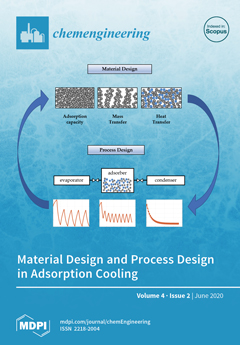The focus of our study is to identify physical properties of different impact-resistant/toughened structural adhesives and identify/develop an elastic-viscoelastic-plastic model as a function of loading rate by using Ludwik-type equations to be able to predict adhesive behavior at higher loading rates and to make cars more crashworthy. For this purpose, we first characterized eight different commercial toughened epoxy structural adhesives to provide detailed information about their constituents using X-ray diffraction (XRD), differential thermal analysis (DTA), thermogravimetric analysis (TGA), scanning electron microscope (SEM) and energy dispersive x-ray spectrometer (EDS). Most (but not all) of the model adhesives contained organic tougheners in the form of carboxyl terminated butadiene acrylonitrile (CTBN) copolymer, as well as polyurethane adducts. The main crystalline inorganic phases were found as calcite (CaCO
3), wollastonite (CaSiO
3) or calcium silicate (CaSiO
3), talc (Mg
3Si
4O
10 (OH)
2), zeolite which is an alumina silicate based mineral and has many different elements in its composition (M
2/nO·Al
2O
3·xSiO
2·yH
2O, M can be Mg, Na, Ca, K, Li). The total amount of inorganic fillers was found to be different in each adhesive. Material behavior of the model adhesives were determined via tensile tests and Single Lap Joint (SLJ) tests in shear. Split Hopkinson pressure bar (SHPB) was also used to measure the strain and stress values at higher strain rates in the order of 10
2 s
−1, which is generally encountered in impact related loading situations. Toughness values in the range ~0.5 to ~1.35 MJ/m
3 were observed with the model adhesives tested in tensile mode within the ~3 × 10
−3 to 0.18 m/m/s strain rate range. The softening behavior of the elastic moduli at higher strain rates observed during tensile testing was also observed with SHPB testing. It is remarkable that, overall, the modulus magnitudes seem to be similar between the tensile test and SHPB specimens within this softening range of the initial bilinear elastic behavior observed. When the results from bulk (tensile) and bonded (shear) specimens were compared, it was clearly seen that the toughness responses of the adhesives to (tensile/shear) strain rates in the bulk and bonded forms, respectively, were different, with the bonded shear toughness values in the ~25 to ~120 MJ/m
3 range within ~1.25 to ~25 mm/mm/s shear strain range. The model adhesive which included just inorganic fillers had the lowest tensile toughness at the lowest tensile strain rate, but the highest slope in its tensile toughness regression line, exhibited the second highest bonded shear toughness. When tested at the extension rates of 25 mm/min and 100 mm/min in bonded lap shear, the same adhesive exhibited limited interfacial failure areas, however the dominant failure mode was cohesive failure. When the extension rate increased further, transition to interfacial (adhesive) failure was observed revealing that interfacial failures do not necessarily diminish adhesive bond toughness. Our observations point to the fact that cohesive deformation/failure processes indicating interfacial separations, inter-particle interactions as well as polymer matrix deformation in high deformation loading scenario as in bonded shear loadings may provide the highest toughness. Apparently, a large inorganic filler weight fraction is not necessary to obtain high shear toughness in bonded form since the highest bonded shear toughness was obtained with the adhesive which had the least amount of inorganic fillers among the model adhesives with 14.72 wt %.
Full article





